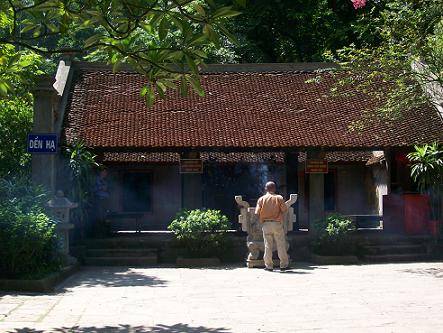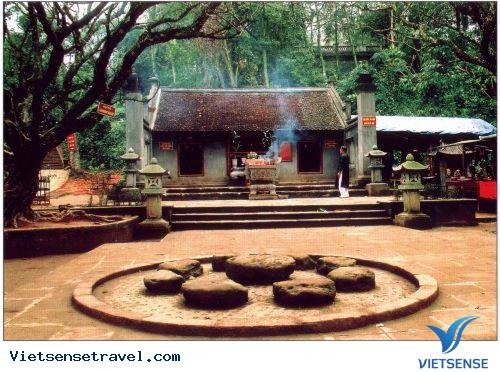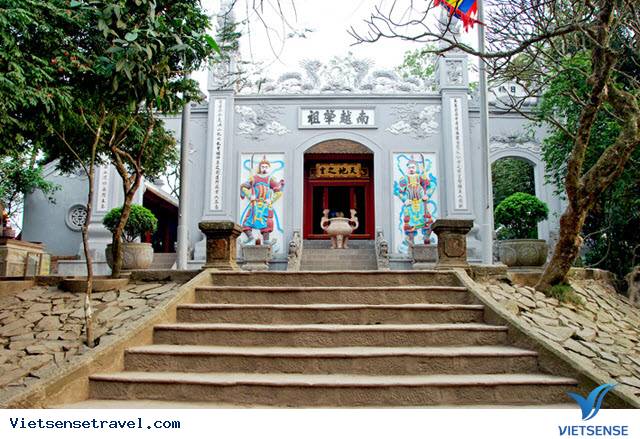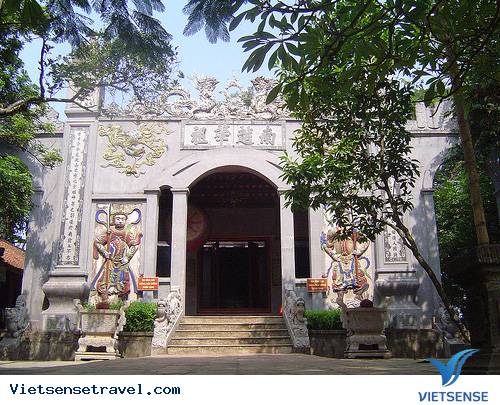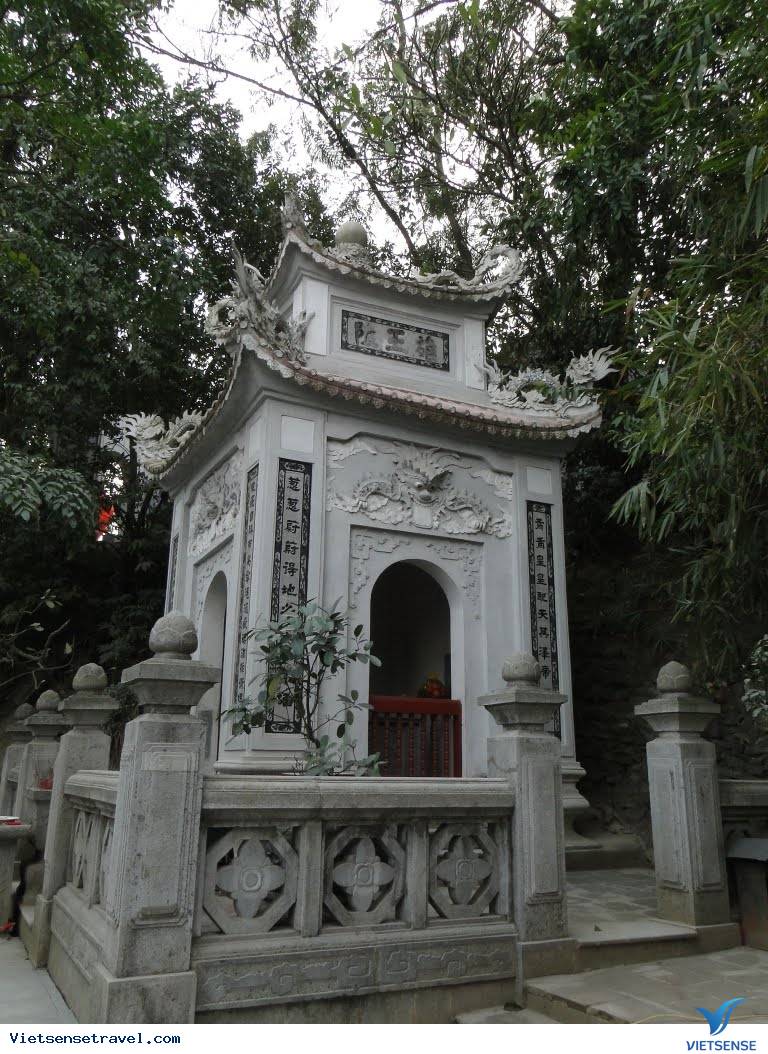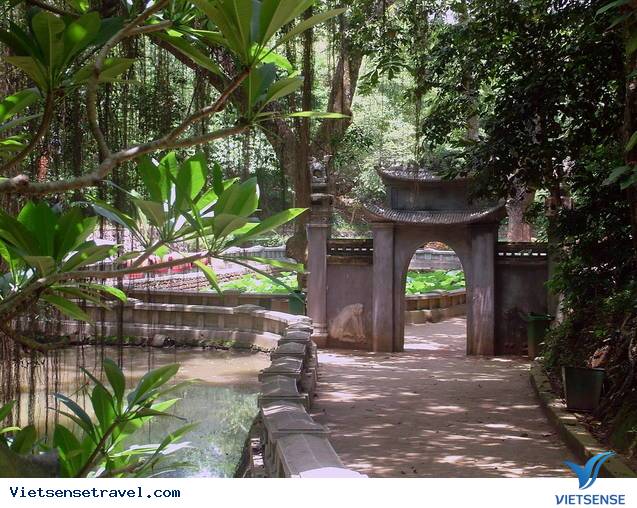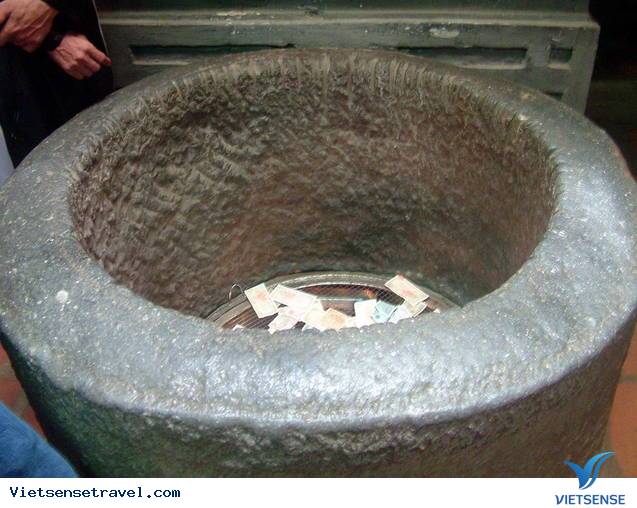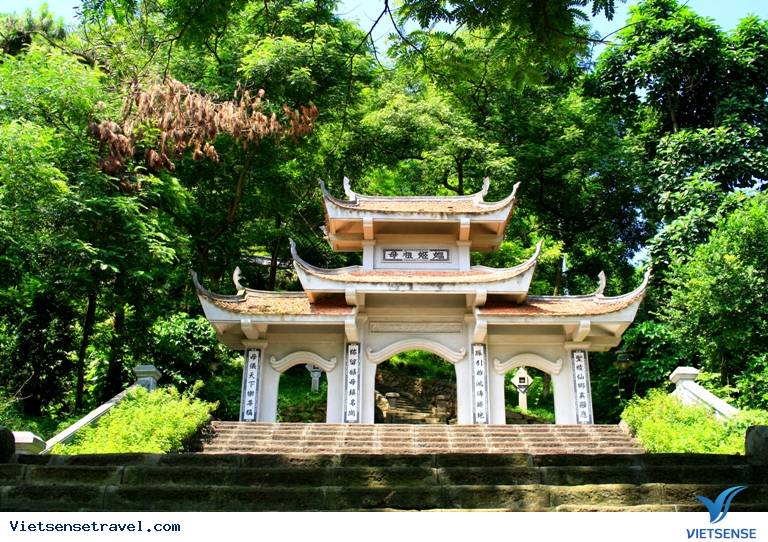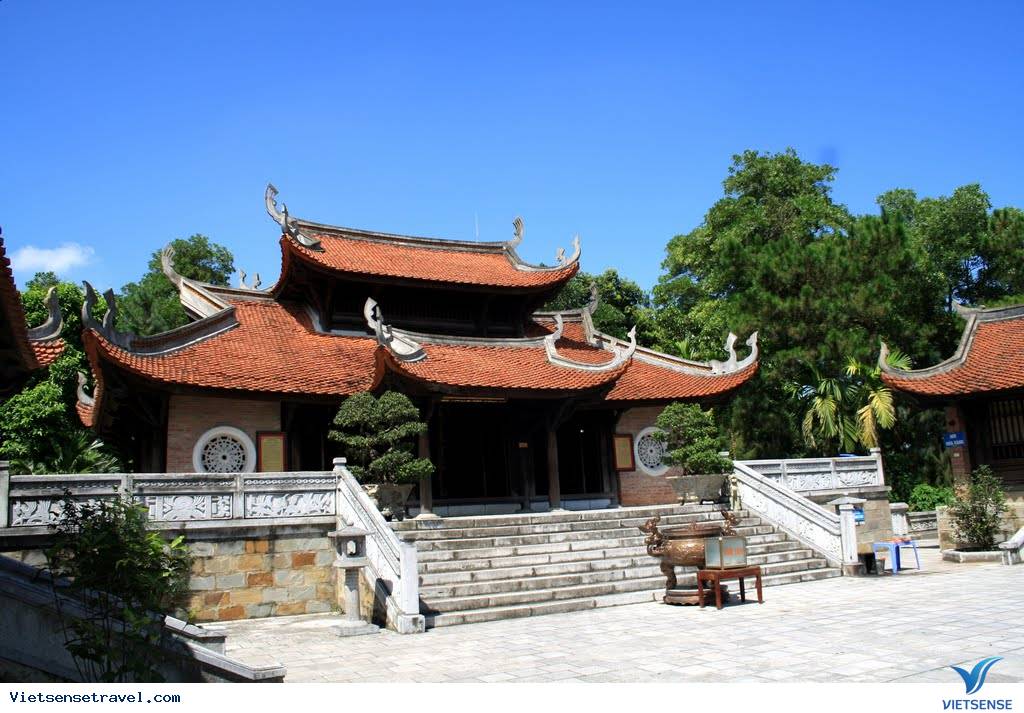Overview of Hung Temple Relics
Join Hung Temple tour, you will admire a complex of relics and famous history of our nation. Here the Hung Kings built the Van Lang country, the first country of our nation and also here you will learn about the heroic kings, about the princesses Tien Dung, My Nuong, about Prince Lang. Lieu with the legend of banh chung, banh day
Taste – Position – Location
The historical site of this land belongs to Co Tich village, Hy Cuong commune, Viet Tri city, Phu Tho province; is the place to worship the Hung Kings who built the country, the ancestors of the Vietnamese nation. In the past, this land was the central area of Van Lang country, located between two rivers like two giant natural moats surrounding the ancient capital of the Hung kings. East with central mountain ranges. This land has many rivers, lakes, hills, and fertile fields due to the accretion of three rivers, which is both favorable for sedentary life and for defense. or withdraw in the event of tribal conflicts.
Currently, traces of residence of the population of the Hung kings are left in dozens of archaeological sites, densely distributed from Lam Thao district to the Bach Hac – Viet Tri junction. The archaeological remains are evidence of an era, with brass metallurgy and wet rice cultivation of an agricultural civilization, which existed before AD for thousands of years.
Hung Temple is the center and focal point of the Hung Kings’ era, the temples worshiping Hung Kings are located on Nghia Linh mountain (also known as Ca mountain according to the locality or other names: Hung mountain, Hy Cuong mountain). 175 meters above sea level. This area used to be a tropical jungle. Today, Hung Mountain still retains the appearance of a natural forest with many generations of different trees, including 150 species of herbs, belonging to 35 families, of which there are still some large trees such as banyan, pine, Thien Tue, etc. game etc..
From afar, Hung Mountain looks like the head of a large dragon facing the South, the dragon’s body winding into Troy mountain, Van mountain, Pheo mountain. Behind Hung Mountain, there are large hills close to each other up to 10km long like a herd of elephants flocking to Dat To, in front is Bach Hac junction with the confluence of three largest rivers in the North: Red River, Lo River , the Da River creates an immense water area, from which there are low hills like a herd of water turtles crawling up betel nut to Nghia Linh. To the east is the overlapping Tam Dao range (mother mountain), far to the south is the towering Ba Vi range (father mountain). Next to Hung mountain, there are hills like phoenix (Tien Kien), tiger (Khang Phu – Chu Hoa). The scenery is spectacular and majestic, the land is full of sacred air of the mountains. Standing on the top of Nghia Linh, we can cover a large area with beautiful scenery of charming mountains.
Summer Temple
Built in the 17th – 18th centuries. The architecture of the second typeface (=) includes the Pre-Bai and the Harem. The architecture of the Ha temple is simple, the bridge is smooth, the hitchhiker is on the pillar, the roof is roofed with roof tiles.
Legend has it that here, Au Co’s mother gave birth to a bag of hundreds of eggs, then hatched into a hundred sons, the origin of the Vietnamese community, the meaning of “compatriots” (with the same bag) is derived from here.. When you children Growing up, father Lac Long Quan brought 50 children to the sea to encroach on the sea and expand his territory. Mother Au Co brought her 49 children back to the mountains, planted mulberries, herded silkworms, weaved cloth, and built a life. The eldest son who stayed to be the King, passed down from father to son for 18 generations, was called Hung Vuong.
Thien Quang Pagoda
The old pagoda was called “Vien Son Co Tu” and later changed to “Thien Quang Thien Tu”. The pagoda was built in the Tran Dynasty to the 15th century and rebuilt in the Nguyen Dynasty. At present, the pagoda has a public-style architecture (I) consisting of three front halls (5 compartments) Tam Bao (3 compartments) and Thuong Dien (3 compartments) the buildings are made in the style of pillars, hitchhiking with your head on the column, roof trusses. Outside there is a corridor built around. The roof of the pagoda is roofed with roof tiles with a curved blade, and the roof edge is covered with the image of a dragon adoring the moon.
The temple worships Buddha according to the Mahayana sect.
In front of the temple, there is a tree of Van Long, nearly eight hundred years old. Here, on September 19, 1945, President Ho Chi Minh, before returning to take over Hanoi capital, worked at the base of Van Tue tree.
Trung Temple
Named Hung Vuong To Temple. The temple was built in the Ly – Tran dynasties. In the 15th century, it was destroyed by the Ming invaders, later rebuilt, the current architecture is the most typeface (-) 3 compartments, the architecture is simple without columns, the truss of the bridge is hitched with columns to hide pillows against the wall, and the roof is roofed. nose tile.
Legend has it that this is the place where the Hung Kings, Lac Hau, Lac General admire the scenery and meet to discuss about the country. Here, the 6th Hung King ceded the throne to Lang Lieu, the filial son who created banh chung and banh day.
Upper Temple
Its name is Kinh Thien Linh Dien (Temple of Heaven on Nghia Linh Mountain). Legend has it that the Hung kings often went to the top of Nghia Linh mountain to conduct religious rituals of agricultural residents worshiping heaven and earth, worshiping the God of rice, praying for good crops and prosperous people. On the top of Hung mountain, there was a giant locust shell, a bamboo boat associated with the legend of the god rice grain, reflecting the dream of a prosperous life.
Legend has it that the 6th Hung King, after defeating the An invaders, established a shrine to worship Saint Giong to commemorate the hero’s merits for fighting the enemy to save the country. Later people, grateful to the Hung Kings, our people built a temple to worship Hung Vuong.
Up to the 15th century, the temple was built on a large scale. In the Nguyen Dynasty, the court provided money and sent officials to supervise the major restoration.
Currently, the temple has an architecture in Vuong typeface, built on 4 levels: House of bells and drums, Dai Bai, Tien Sa, and Hau Palace.
On September 18, 1962, President Ho Chi Minh returned to visit Hung Temple, who took a lunch break at the southeast corner of Thuong Temple before returning to Uncle Ho’s instructions to plant trees. Build this place into a historical park for future descendants to visit.
Hung King’s Tomb
Legend has it that the tomb of the 6th Hung King, before he died, was told to bury me on Ca mountain so that I could stand on the high mountain and take care of the land for my descendants. Formerly an earthen tomb, in the 27th year of Tu Duc (1870) to build the Tomb, the 2nd year of Khai Dinh (1922) was restored as it is today.
Pillar of oath
Legend has it that when Thuc Phan An Duong Vuong abdicated the throne, he swore forever to protect the brocade and brocade that the Hung King handed over and forever the scent of the Hung family.
Temple Well
The name is Ngoc Tinh. Legend has it that the two princesses Tien Dung and Ngoc Hoa, the daughter of the 18th Hung King, often looked in the mirror and brushed their hair when they followed their father on a business trip through this area. The two girls were the ones who had merit in teaching the people to plant rice and control the water, so the people built temples.
The temple was built in the 18th century, the temple was built on top of a well, so now the well is inside the temple’s harem, the water is cool and clear in four seasons, never drying up.
At present, the temple has a public-type (I) architecture, including the front gate, the harem, the harem, and the harem built in the style of a mallet. The roof of the temple is roofed with roof tiles, the roof bank is decorated with two dragons adoring the moon.
On September 19, 1954, President Ho Chi Minh visited Hung Temple, he talked with comrades of the Pioneer Army, at Gieng Nguoi temple.
“The Hung Kings were instrumental in building the country.
Uncle and grandson must protect the country together”
Temple of the Mother Au Co
To Mau Au Co Temple was built on the top of Van mountain (My name is Oc Son mountain), in Co Tich village, Hy Cuong commune, Viet Tri city, Phu Tho province, with an altitude of 170.2m above the surface. The sea, located in the system of “Tam Son Forbidden Lands” are Hung mountain, Troc mountain, and Van mountain.
Standing on the top of Van mountain, you can cover a large area of charming mountains. In front of Van Mountain is Hung Mountain, where the Hung Kings are worshiped. Hung Mountain looks like a big dragon’s head from afar, the dragon’s body curves into Troy Mountain, and Twist Mountain is behind. On the left is the Red River, on the right is the Lo River, like two peach silk strips, surrounding the three “To Son” tops in the middle. Behind Van mountain are large hills that are as close as bowls, associated with the legend “Hundred elephants return to the Land of the Ancestors”. The scenery is spectacular and majestic, the land is full of sacred air of the mountains.
To Mau Au Co Temple is an architectural complex including: The main temple worshiping the Mother Au Co, the left house, the ha vu house, the stele house, the pillar, the tam quan… designed in a traditional, alternating construction style. and modernity. Patterns on Dong Son bronze drums: Wooden poles with millet stone cutting board, red rustic brick walls, temple roofs with curved blades like Lac birds wings, stone pillars like pen writing on the blue sky… for the people We both feel close to our mother and sacred.
In the harem of the temple, there is a bronze statue of Ancestor Au Co. Below is the statue of Lac Hau and Lac General.
Temple of the Mother Au Co is a great cultural work of our time – built by the descendants of the Hung Kings, aiming to “gather” and “convergence” the culture of “Hung Temple”. Complementing the religious architectural complex in the Hung Temple Historic Site, expressing the affection of our people for the legendary Mother Au Co, the legendary sacred mother of the Vietnamese nation.
Temple of the National Ancestor Lac Long Quan
The Temple of the National Ancestor Lac Long Quan was built at the foot of Sim mountain in 2006, located in the architectural complex of the Hung Temple Historic Site.
Mount Sim
Sim Mountain looks like a big turtle from afar, heading towards Hoc Trai Lake. The mountain has a height of 94m and an area of 5ha. About 100m from the main gate here to the Southeast, following the crow’s flight.
Standing on the top of Sim mountain, you can look over a large land, where there are mountains. In front of it is a flat, gentle field that gradually eases towards the immense lake. On the left is Hoc Nay mountain, on the right is Non mountain in the distance, hiding the To Mau Au Co temple. The majestic and majestic scenery of the mountains converges.
Temple of Lac Long Quan
Lac Long Quan temple is facing southwest. The temple was built with a nail-type architecture, including: Temple gate, Phuong Dinh, Ta Vu, Huu Vu, pillars, and temples. Traditional architecture of ironwood, painted with gold vermilion, walls built with red bricks, roof tiled nose.
In the temple, there is a statue of Quoc To Lac Long Quan, and statues of Lac Hau and Lac General are cast in bronze. Temple of the National Ancestor Lac Long Quan forms a complex of landscape architecture, contributing to preserving and recreating historical images, meeting the needs of the people in worshiping the ancestors of the nation. To educate the traditional values of the nation.
Hung Vuong Museum
Hung Vuong Museum was built in 1986, designed by the Vietnam Association of Architects, based on the legend of Banh Chung and Banh Day, reflecting the ancient Vietnamese conception of the universe as round and square.
In 1993, the museum opened to visitors, with more than 700 artifacts, 102 photographs, 4 glazed ceramic paintings, 5 lacquer paintings, 9 bronze mounds, 5 picture boxes, a group of bronze statues and many auxiliary artifacts.
Source: Collected internet.
